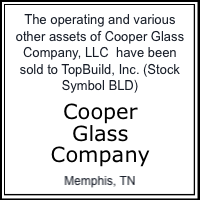
7 Time Tested Fundamentals of Selling your Business
Would you rather sell your company for 3x or 10x EBITDA?
That’s a big difference, and one worth putting serious thought into.
Let’s say you have 2 companies. Both generate $25 million in revenue and $5 million of profit a year. Company 1 has an owner with complete control of all areas of the business and no management diversification. Company 2 has great management diversification and its largest customer is only 2% of its revenue.
Both companies might sell. But Company 1 will bring in much less than Company 2. Let’s look at some key factors you can take control of now to help you sell like Company 2 later.
Get Audits or Reviewed Financial Statements
Internally prepared financial statements are not enough. Serious buyers will be looking for more than that. Have a certified professional do an independent/external audit or at least a review of your company’s financials, so there is no possibility of a conflict of interest. Prospective buyers will have much more confidence in your financial performance with professionally prepared financial statements and the sale process will go much smoother.
Diversify Your Management
Make sure the business is not dependant on you. Ask yourself: if I go on an extended vacation, would everything run smoothly? If your answer is anything other than a confident “yes”, it’s time to start working yourself out of a job.
As we pointed out in last month’s post: “Many business owners are such an integral part of the day-to-day operations of the company that they are simply unable to hand anything off to anyone else.”
That worked fine at the beginning when you might have been a one-person show. But now that you are trying to find a buyer, you need to be able to show that it can thrive without you. (After all, they’re wanting to buy your business…not you!) Work on training your upper-level management team to be up to the task of filling your shoes.
Diversify Your Customers
Two big reasons you need to do this:
1. The Walmart Effect –
Charles Fishman described this in his 2006 book by the same name. Essentially, when the big box giant moves into an area, independent stores can’t compete. Walmart built its entire business on offering everyday products at lower and lower prices. As they have grown, they have become powerful enough to get whatever they demand. (Here’s an interview Mr. Fishman did with NPR back in 2006 on the topic.)
Our experience with the “Walmart Effect”:
We were helping sell a small company that had products on Walmart’s shelves. The new buyer was called to a meeting at the Walmart headquarters where they were told they would need to slash their prices by 30% or Walmart would replace them with a competitor’s products! Since Walmart was one of the main revenue sources for this business, they had no choice but to comply.
2. The Amazon Effect
Amazon is responsible for roughly 50% of American e-commerce. Their presence has dramatically changed how retailers do business and what consumers expect. Depending on your sales channel, be very aware of how they will have an effect on you!
Our Experience with the “Amazon Effect”:
One of our valuation clients lost a significant number of customers to Amazon. People were choosing to buy directly from Amazon rather than go through this company. Prior to Amazon’s impact, this company’s adjusted EBITDA (earnings before taxes, depreciation, and amortization) was $40+ million. By mid-2018, it was $32 million. Amazon had destroyed their customer base!
Be Innovative
Whether it’s Walmart, Amazon, or a mom & pop shop down the street, someone is ready and willing to take your revenue away. You simply cannot afford to be complacent. The things you did to get your business to this point are not the things that will carry you forward. Be a student of your industry, and always be looking for ways to improve, impress, and be more efficient. No one pays top dollar for businesses that are lagging behind.
Diversify Your Products
Have a variety of income sources that create recurring revenue. Businesses that are strictly “project-based” are at a disadvantage. If you are only getting paid when you or your crew is actually working (i.e. construction, installation, etc.), your business isn’t as stable and attractive as it could be. More valuable businesses have ongoing maintenance contracts and revenue streams.
For example, we worked with a fire suppression system installer whose revenue was 80% based on new installations. While they had incredibly high profit margins, they relied heavily on unpredictable project-oriented revenues. They needed more recurring types of revenue, so they added maintenance packages and fire safety inspections to their offerings and were able to pick up 25% of revenue as recurring sales.
Partner with a Reputable Valuation Firm
After years of getting your business in a position to sell it, the last thing you want to do is trust the process to someone who is less than the best. Look for a valuation firm with a solid reputation for helping people determine value and walking their clients through what can often be a complicated transaction. Your company most likely represents the single largest investment you’ve ever made. You simply cannot afford to settle when it’s time to sell.
Next Steps?
For your company to be valuable, you need to know that these practices take time to implement. So start now!
Some businesses are great companies–providing a great living for the owner’s family. But they aren’t a professionally-run business. They’re simply a lifestyle business. By applying the suggestions above and partnering with someone like Southard Financial, you could mitigate risk, make your company more valuable, and be taken seriously by genuine buyers.
Contact Southard Financial today by calling (901) 761-7500 or visiting southardfinancial.com to schedule a call.
Tags: fundamentals, sell your business, valuation






